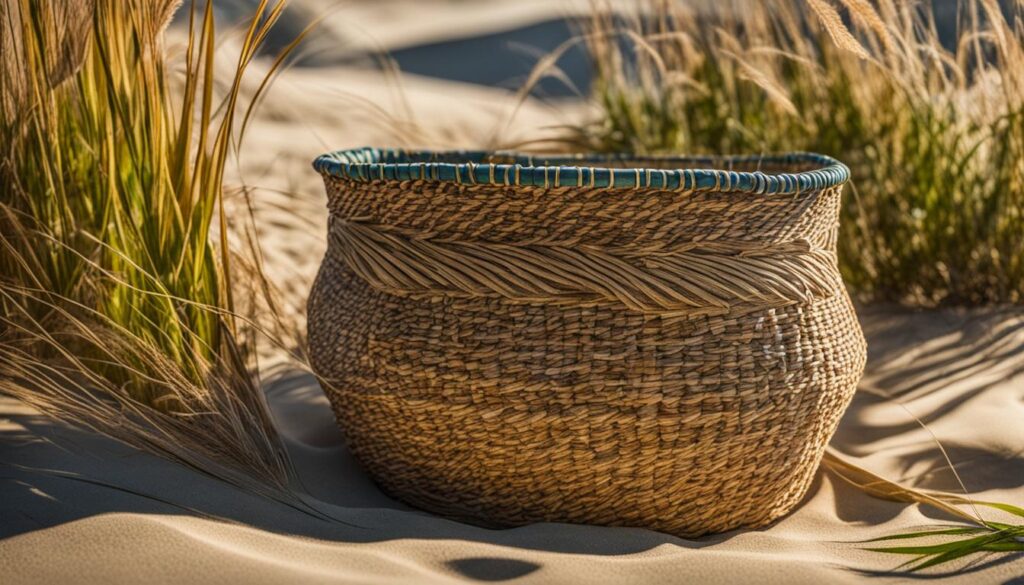If you’ve ever wondered about the natural habitats of sweetgrass, you’re in the right place. Sweetgrass, scientifically known as Hierochloe odorata, can be found thriving in various regions across the United States. It is native to wet meadows, low prairies, and the edges of sloughs and marshes in Minnesota, North Dakota, Montana, South Dakota, northwest Iowa, and western and central Montana.
But that’s not all. Sweetgrass also has a presence from Labrador to Alaska, south to New Jersey, Indiana, Iowa, New Mexico, and Arizona. It is a versatile plant that prefers moist, cool meadows, shaded stream banks, and cool mountain canyons. With a preference for soil with a pH range of 6 to 8, sweetgrass can be found below 1830 m in California.
Known for its distinct fragrance, sweetgrass plays a significant role in Native American traditions and ceremonies. Keep reading to discover the ethnobotanic uses of sweetgrass and its cultural significance.
Ethnobotanic Uses of Sweetgrass
Sweetgrass, a plant rich in cultural significance, holds significant ethnobotanic uses, particularly among Native American tribes. Its ceremonial importance is deeply ingrained in traditional practices and rituals.
One of the primary uses of sweetgrass is as incense or smudge. Native American tribes such as the Omaha, Ponca, Kiowa, Dakota, Lakota, Blackfeet, Cheyenne, Pawnee, and Winnebago utilize sweetgrass in their ceremonies. They recognize its fragrance and smoke as cleansing and purifying agents, capable of carrying their prayers to the Great Spirit.
Sweetgrass is also an integral part of the Sun Dance ritual performed by the Cheyenne, Blackfeet, and Lakota tribes. The braided-grass stems are burned, releasing aromatic smoke that symbolizes life’s growth and renewal.
Aside from its ceremonial uses, sweetgrass also possesses medicinal properties. It is employed in various traditional healing practices, including the treatment of coughs, sore throats, high-protein edemas, venereal infections, and postpartum bleeding.
The demand for sweetgrass stems from its symbolic and healing qualities, making it a sacred and revered plant in Native American cultures.
Cultural Significance of Sweetgrass
Sweetgrass holds immense cultural significance, particularly among the Gullah community, which are descendants of enslaved Africans in the South Carolina coastal area. For centuries, sweetgrass has been intertwined with the sociological traditions of the Gullah people, playing a crucial role in their cultural identity.
The Gullah people honor their African heritage by using sweetgrass leaves as the base material for their traditional coiled basketry. This ancient craft has been passed down through generations, originating from the slaves’ African homelands. The art of coiled basketry is deeply embedded in Gullah history and serves as a visual representation of their resilience, creativity, and connection to their ancestors.
The baskets made from sweetgrass are not only functional but also recognized as an art form worldwide. The intricate designs and skilled craftsmanship of Gullah basketmakers have gained attention and admiration from collectors and art enthusiasts. These beautiful baskets provide a significant source of income for the Gullah community, contributing to their economic sustainability.
Unfortunately, the populations of sweetgrass in South Carolina have been adversely affected by urbanization and land development. This threatens the availability of sweetgrass as a vital cultural resource for the Gullah community. Efforts to preserve and protect sweetgrass habitats are essential to ensure the continuity of this cherished tradition and its cultural significance.
Conclusion
Sweetgrass, a fragrant and resilient perennial grass, is found in various regions across the United States, thriving in wet meadows, low prairies, and the edges of sloughs and marshes. Its natural habitats serve as essential ecosystems for this remarkable plant. Moreover, sweetgrass holds immense cultural significance, being utilized ceremonially by Native American tribes and serving as a vital material in the traditional basketry of the Gullah community.
The cultural practices and traditions surrounding sweetgrass underscore its enduring value and importance. Native American tribes burn sweetgrass as incense or smudge during ceremonies, believing its fragrant smoke carries prayers to the Great Spirit and purifies the space. For the Gullah community, sweetgrass serves as the foundation for their intricate and majestic coiled baskets, representing generations of cultural heritage.
However, the natural habitats of sweetgrass are increasingly threatened by urbanization and land development. To preserve this invaluable plant and its cultural significance, conservation efforts are crucial. It is essential to raise awareness about the importance of preserving sweetgrass populations and taking steps to protect their natural habitats for future generations.
Can Sweetgrass also Grow in Texas?
Yes, sweetgrass can also grow in Texas. The key to successful rye grass growth tips in this region is to plant it in the fall for a full season of growth. Proper watering, regular mowing, and well-drained soil are essential for healthy sweetgrass in Texas.










